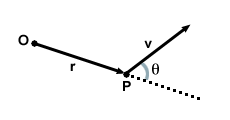Please wait while we process your payment
If you don't see it, please check your spam folder. Sometimes it can end up there.
If you don't see it, please check your spam folder. Sometimes it can end up there.
Please wait while we process your payment

By signing up you agree to our terms and privacy policy.
Don’t have an account? Subscribe now
Create Your Account
Sign up for your FREE 7-day trial
By signing up you agree to our terms and privacy policy.
Already have an account? Log in
Your Email
Choose Your Plan
Individual
Group Discount
Save over 50% with a SparkNotes PLUS Annual Plan!
 payment page
payment page
Purchasing SparkNotes PLUS for a group?
Get Annual Plans at a discount when you buy 2 or more!
Price
$24.99 $18.74 /subscription + tax
Subtotal $37.48 + tax
Save 25% on 2-49 accounts
Save 30% on 50-99 accounts
Want 100 or more? Contact us for a customized plan.
 payment page
payment page
Your Plan
Payment Details
Payment Summary
SparkNotes Plus
You'll be billed after your free trial ends.
7-Day Free Trial
Not Applicable
Renews July 10, 2025 July 3, 2025
Discounts (applied to next billing)
DUE NOW
US $0.00
SNPLUSROCKS20 | 20% Discount
This is not a valid promo code.
Discount Code (one code per order)
SparkNotes PLUS Annual Plan - Group Discount
Qty: 00
SparkNotes Plus subscription is $4.99/month or $24.99/year as selected above. The free trial period is the first 7 days of your subscription. TO CANCEL YOUR SUBSCRIPTION AND AVOID BEING CHARGED, YOU MUST CANCEL BEFORE THE END OF THE FREE TRIAL PERIOD. You may cancel your subscription on your Subscription and Billing page or contact Customer Support at custserv@bn.com. Your subscription will continue automatically once the free trial period is over. Free trial is available to new customers only.
Choose Your Plan
This site is protected by reCAPTCHA and the Google Privacy Policy and Terms of Service apply.
For the next 7 days, you'll have access to awesome PLUS stuff like AP English test prep, No Fear Shakespeare translations and audio, a note-taking tool, personalized dashboard, & much more!
You’ve successfully purchased a group discount. Your group members can use the joining link below to redeem their group membership. You'll also receive an email with the link.
Members will be prompted to log in or create an account to redeem their group membership.
Thanks for creating a SparkNotes account! Continue to start your free trial.
We're sorry, we could not create your account. SparkNotes PLUS is not available in your country. See what countries we’re in.
There was an error creating your account. Please check your payment details and try again.
Please wait while we process your payment

Your PLUS subscription has expired
Please wait while we process your payment
Please wait while we process your payment

Angular Momentum
The final concept we develop for rotational motion is that of angular momentum. We will give the same treatment to angular momentum that we did to linear momentum: first we develop the concept for a single particle, then generalize for a system of particles.
Consider a single particle of mass m travelling with a velocity v a radius r
from an axis, as shown below.

| l = rmv sinθ |
Because angular momentum is the cross product of position and linear momentum, the angular momentum formula is expressed in vector notation as:
| l = r×p |
It is possible to derive a statement relating angular momentum and net torque.
Unfortunately, the derivation requires quite a bit of calculus, so we will
simply revert to the linear analogue. Recall that:  F =
F =  . In a
similar way,
. In a
similar way,
 τ = τ =  |
In circumstances of rotational motion, however, we usually deal with rigid bodies. In such cases the definition of the angular momentum of a single particle is of little use. Thus we extend our definitions to systems of particles.
Consider a rigid body rotating about an axis. Each particle in the body moves in a circular path, implying that the angle between the velocity of the particle and the radius of the particle is 90o. If there are n particles, we find the total angular momentum of the body by summing the individual angular moments:
| L | = | ( mr2)σ mr2)σ | |
| = | Iσ |
Please wait while we process your payment

